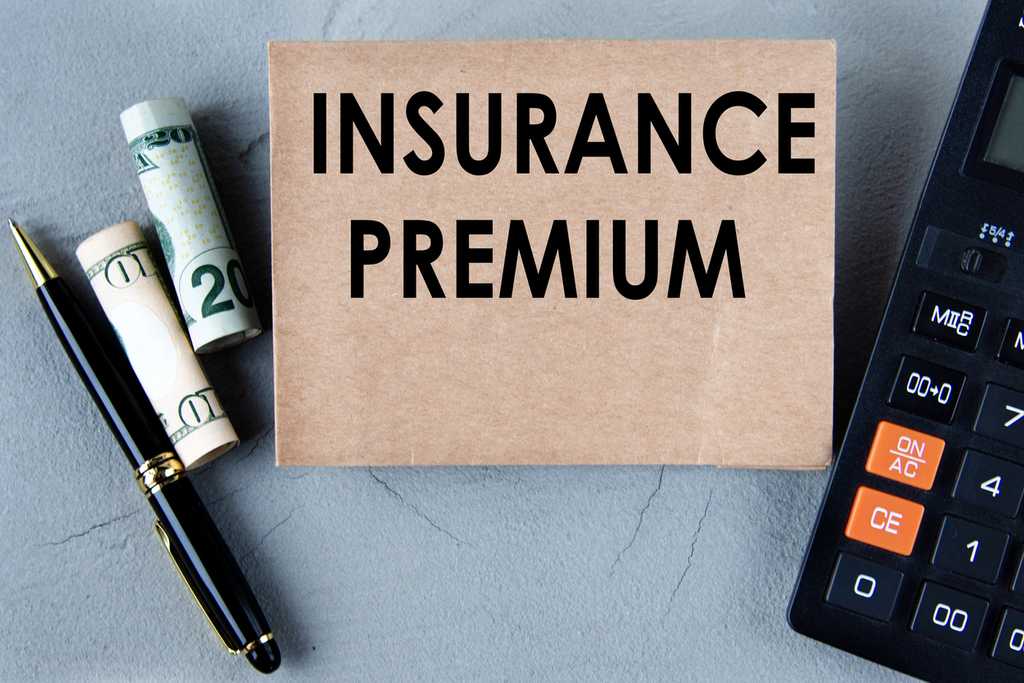When you purchase any type of insurance, whether it’s auto, health, life, or home insurance, you’re often faced with the term insurance premium. But what exactly does this term mean? In simple terms, an insurance premium is the amount of money you pay to an insurance company in exchange for coverage. This payment ensures that the insurer will cover certain risks as outlined in your policy.
Insurance premiums can be paid monthly, quarterly, annually, or even in one lump sum depending on the terms of your policy. Regardless of the payment structure, the premium is essential because it is the foundation of your insurance contract. The premium amount can vary significantly based on numerous factors, including the type of insurance, your personal risk profile, and even external economic factors.
In this blog post, we’ll break down the insurance premium definition and explore how it’s calculated, the different types, and tips for managing your premiums effectively. Understanding insurance premiums not only helps you make better decisions about your coverage but also enables you to find opportunities for savings.
Table of Contents
ToggleWhat is an Insurance Premium?
At its core, an insurance premium is the price you pay for an insurance policy. Think of it as the cost of transferring risk from yourself to the insurance company. In exchange for the premium, the insurer agrees to cover certain financial losses that may arise from events such as accidents, illness, theft, or damage to your property.
For example, if you purchase a car insurance policy with a $1,200 annual premium, you are agreeing to pay the insurer $1,200 per year to cover risks associated with your vehicle. Should you get into an accident, the insurer will help cover the costs of repairs or medical bills, as long as the claim falls within the terms of your policy.
Why Do Insurance Companies Charge Premiums?
Insurance companies collect premiums to ensure they have enough funds to pay for potential claims from all policyholders. These premiums are pooled together, allowing the insurer to manage risks across a large group of people. Not every policyholder will need to make a claim, so insurers use statistical models to predict the likelihood of payouts and set premium prices accordingly.
How Insurance Premiums Are Calculated
Insurance premiums are not arbitrary. Insurers use complex algorithms and data to calculate the exact premium a policyholder will pay. These calculations are based on a variety of factors, including personal details, the type of insurance, and the coverage amount. Understanding how these factors influence your premium can help you make informed decisions when selecting a policy.
Factors that Affect Your Insurance Premium
Several key factors go into determining your premium, and these can vary by the type of insurance:
- Age and Gender: Younger drivers or individuals typically pay higher premiums for auto and life insurance because they are considered higher risk.
- Location: Where you live can have a significant impact on your premium. If you live in a high-crime area or a location prone to natural disasters, your homeowners or auto insurance premium may be higher.
- Driving Record: For auto insurance, a clean driving record can lead to lower premiums, while accidents or traffic violations may result in increased costs.
- Health Status: For health and life insurance, your current health and medical history will play a role in determining your premium.
- Credit Score: In some cases, insurers use credit scores to assess the likelihood of a policyholder filing a claim. Higher credit scores can lead to lower premiums.
Risk Assessment and Actuarial Science
Insurance companies rely on actuarial science—a branch of mathematics that deals with the management of risk—to assess how likely it is that a policyholder will file a claim. This involves analyzing large sets of data, including demographic statistics, past claims, and accident history, to predict future losses.
Based on this risk analysis, insurers assign a premium that adequately reflects the probability of a claim. For example, a high-risk driver with a history of speeding tickets will pay a higher premium than someone with a clean driving record because the former is statistically more likely to file a claim.
What Influences Changes in Premium Costs?
Insurance premiums are not set in stone. They can change over time due to several factors. It’s important to be aware of these so you can anticipate any changes in your premium and take steps to manage them.
External Factors Impacting Premium Costs
- Economic Changes: Inflation can cause the cost of claims to rise, prompting insurers to increase premiums.
- Natural Disasters: Events like hurricanes or wildfires can lead to a surge in claims, causing insurers to adjust premiums for everyone in the affected area.
- Regulatory Changes: New laws or regulations can alter the insurance landscape, leading to changes in how premiums are calculated.
Personal Factors That Affect Your Premium
- Changes in Your Coverage Needs: If you add more coverage, such as adding a new vehicle to your auto insurance policy or upgrading your home, your premium will likely increase.
- Lifestyle Changes: Personal changes, like moving to a new location or changing jobs, can affect your premium. For instance, moving to a safer neighborhood could lower your home insurance premium, while a longer commute might increase your auto insurance cost.
- Claims History: Filing multiple claims can lead to a higher premium because it signals to the insurer that you pose a higher risk.
Types of Insurance Premiums
Not all insurance premiums are the same, and understanding the different types can help you make better decisions when choosing your insurance policy. Below are the main categories of premiums you might encounter across various insurance types:
Fixed vs. Variable Insurance Premiums
When you sign up for insurance, your premium can either be fixed or variable:
- Fixed Premiums: A fixed premium remains the same throughout the term of the policy. These premiums are stable and predictable, which is beneficial for budgeting. Term life insurance and whole life insurance are common examples of policies with fixed premiums.
- Variable Premiums: With a variable premium, the cost can fluctuate over time, depending on external factors or your personal circumstances. For example, your auto insurance premium might change if you get a speeding ticket or your health insurance premium could increase due to inflation or changes in healthcare laws.
Recurring vs. One-Time Insurance Premiums
The frequency with which you pay your insurance premium also varies:
- Recurring Premiums: Most insurance policies require regular payments, typically monthly, quarterly, or annually. Health insurance, auto insurance, and homeowners insurance commonly have recurring premium structures.
- One-Time Premiums: In some cases, you may pay a lump sum for coverage. This is more common in life insurance policies, such as single-premium life insurance, where you make one upfront payment to cover the policy for its duration. This can provide peace of mind without the need for ongoing payments.
Premiums in Different Types of Insurance
Insurance premiums can differ greatly depending on the type of insurance you are purchasing. Let’s explore some common examples:
- Auto Insurance Premiums: Your auto insurance premium is influenced by factors like your driving record, vehicle type, and location. Safe drivers with no history of accidents generally pay lower premiums, while those with traffic violations or high-risk vehicles face higher costs.
- Homeowners Insurance Premiums: Home insurance premiums are determined by factors like the value of your home, its location, and the likelihood of natural disasters or crime. Adding extra coverage for specific items (like jewelry or electronics) or flood insurance can increase your premium.
- Health Insurance Premiums: Health insurance premiums vary based on your age, health condition, the level of coverage, and even the region where you live. Premiums for higher-tier plans with broader networks or lower deductibles will generally cost more.
- Life Insurance Premiums: With term life insurance, you typically pay a fixed premium for a specific number of years. Whole life insurance, on the other hand, accumulates cash value and may have higher premiums but offers permanent coverage.
The Relationship Between Deductibles and Premiums
What is a Deductible and How Does It Affect Premiums?
A deductible is the amount of money you agree to pay out-of-pocket before your insurance kicks in. There’s a direct relationship between your deductible and your premium: the higher your deductible, the lower your premium, and vice versa.
For example, let’s say your auto insurance has a $500 deductible. If you get into an accident and the repair costs are $2,000, you’ll pay the first $500, and your insurance company will cover the remaining $1,500. However, if you opted for a higher deductible of $1,000, your premium would be lower, but you’d pay more out of pocket in the event of a claim.
Choosing the Right Deductible
Selecting the right deductible depends on your financial situation and risk tolerance. A higher deductible means lower premiums but greater out-of-pocket expenses if you need to file a claim. This is a common strategy for those looking to save on monthly premiums. Conversely, a lower deductible results in higher premiums but minimizes your financial responsibility when filing a claim.
Ways to Reduce Your Insurance Premiums
Managing and reducing your insurance premiums is possible through several strategies, especially if you’re mindful of the factors that influence premium rates.
Comparison Shopping for Insurance
One of the most effective ways to lower your premium is by comparing rates from different insurance companies. Insurers often offer different premiums for the same level of coverage. Use comparison websites to review policies side-by-side, but also consider contacting insurers directly to ask about discounts or special promotions.
Bundling Policies
Insurance companies frequently offer discounts to customers who bundle multiple policies with them. For example, combining your auto and home insurance with the same insurer could result in a significant premium reduction. Multi-policy discounts can range from 5% to 25%, depending on the insurer.
Taking Advantage of Discounts
Insurers offer a variety of discounts that can help lower your premium. Some common discounts include:
- Safe driver discount (for having a clean driving record)
- Non-smoker discount (for health or life insurance)
- Good student discount (for student drivers with high grades)
- Security system discount (for homeowners with monitored alarm systems)
Be sure to ask your insurance provider if you qualify for any discounts. Many times, discounts aren’t automatically applied, and you need to request them.
Maintaining a Good Credit Score
In many cases, your credit score can influence your premium, especially for auto and homeowners insurance. Insurers believe that people with higher credit scores are less likely to file claims. If your credit score improves, you may be able to negotiate a lower premium with your insurer.
Common Insurance Premium Questions Answered
What Happens If I Miss a Premium Payment?
If you miss an insurance premium payment, most insurers offer a grace period—usually around 30 days—during which you can pay without losing coverage. However, if you fail to make a payment during this period, your policy could be canceled, and you would no longer be covered.
Can I Get a Refund on My Premium?
In some situations, you may be entitled to a refund on your premium. For instance, if you cancel your policy before the term ends, you may receive a refund for the unused portion of your premium. This is called an unearned premium. However, many insurers charge a cancellation fee, so be sure to ask about the terms when you cancel.
How Does Premium Financing Work?
Premium financing allows you to borrow money to pay for your insurance premium, usually for large policies like life insurance. This financing is often used by individuals who want to preserve cash flow while maintaining necessary coverage. Premium financing can help spread the cost over time, but it comes with risks, such as interest payments and the possibility of default.
Conclusion: Understanding and Managing Your Insurance Premium
In summary, your insurance premium is a vital component of your insurance policy and understanding how it’s calculated and what influences it can help you manage your financial responsibilities more effectively. The key is to understand the various factors that impact your premium—ranging from personal risk factors to broader economic trends—and to take proactive steps to reduce it where possible. Comparison shopping, bundling policies, and maintaining a good credit score are all excellent ways to keep your premiums manageable.
By staying informed and regularly reviewing your insurance policies, you can ensure that you’re not overpaying for coverage and can find opportunities for savings. Remember that managing your insurance premium is a long-term strategy, and with the right approach, you can maximize your coverage while minimizing costs.



